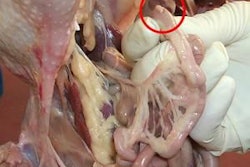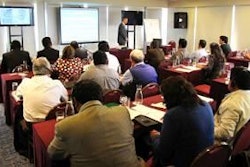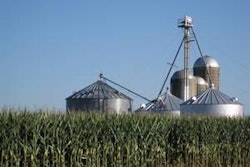
Tom Lippi’s interest in manufacturing was stimulated by early exposure to the plant of the A.R. Wood brooder company in Minnesota where his father was president. He earned a BME, followed by a Masters in Industrial Engineering from the University of Minnesota. After service in the U.S. Army, and a stint as an engineer at Honeywell, he was persuaded to join his father in 1973. From 1981 through 2001, he served as director of engineering research and development, V.P. of international sales and V.P. of marketing for Big Dutchman with an intervening short spell with the Brower Company.
Since 2002 he has been associated with CTB’s Chore-Time brand, and since 2005 as vice president and general manager of the Chore-Time Egg Production Systems business unit. In July he became vice president of business and technology development for the corporation.
Egg Industry: How do U.S. equipment manufacturers interact with the industry?
Tom Lippi: It is a collaborative process. At Chore-Time we continually consult with egg producers regarding their requirements. We are guided by the principle of “What does the customer need?” After internal development and testing, new modules are installed at selected clients for further field evaluation. When we are happy that installations or equipment is ready for full release we invite potential customers to visit these operations. We also unveil innovations at tradeshows such as the IPE and the Midwest Exhibition, but new releases do not always coincide with the show calendar. Our sales team has developed close relationships with our client base and they also make use of videos, farm tours, advertising and our web site to appraise the industry of new products.
EI: How have producers worldwide benefited from innovations from the advances made by equipment manufacturers?
TL: The first area which comes to mind is the durability of equipment. In the 1980s cages were expected to have a life of 15 years or less. Current installations may last as long as 25 years with good care. I attribute this primarily to improved ventilation since there have been no major changes in galvanizing, welding or assembly. The second area is reliability, achieved through upgrading the design of mechanical components and control systems. Breakdowns impact production, disrupt operations and lead to increased repair costs. Through applying constant improvements we hope to contribute to customer profitability. Chore-Time believes that we should, where possible “make equipment different and make it better.” This principle guides our development engineers and manufacturing department.
EI: Can you provide an example?
TL: The impact of inappropriate design was clear when the first manure belt batteries were imported from Europe. Those installations which were designed for relatively small houses frequently failed in units of over 350 feet in length. Many of those early installations had to be upgraded and reinforced. Chore-Time entered the market a little later than our overseas competitors but with the benefit of experience which was incorporated in our designs and manufacturing.
EI: What have been the major trends in design of egg production equipment over the past 20 years?
TL: Manufacturers have adapted cages to accommodate to a reduction in density dictated by welfare regulations. We believe that current systems allow optimal expression of genetic potential with regard to egg production, livability and feed conversion. Most systems today take into account the popularity of in-line complexes which demand gentle handling of eggs through elevators and along conveyors. There have been remarkable strides in environmental control systems. The introduction of manure belt batteries has enabled many producers to retrofit high-rise houses with new cages to increase production. Manure belt batteries virtually eliminate flies and rodents, suppress salmonella infection and yield a potentially valuable byproduct.
EI: From your perspective do you perceive any advantages or disadvantages associated with acquisitions and consolidation within the U. S. egg industry?
TL: The structural changes within our industry are driven by economic factors and changes and are inevitable following the trends in many other sectors of the economy. It is obvious that consolidation creates a measure of market stability. Consolidation reflects the pattern inherent to food distribution which now comprises relatively few major supermarket chains. From the perspective of an equipment manufacturer we are now able to influence a wider segment of the market through fewer decision makers. There appears to be a convergence of needs which obviously contributes to the efficiency of our research and development and the speed at which we can deliver new systems. The situation in the U.S. is contrasted to Canada which has many more farms but with a fraction of our domestic output. We are often asked to modify systems and produce “specials” to satisfy the needs of our northern market. However, consolidation is also occurring in Canada. In short, Chore-Time and other manufacturers have to recognize the inevitability of consolidation and to adjust accordingly.
EI: How will Chore-Time respond to current welfare initiatives such as in California and Michigan?
TL: Chore-Time is carefully following events and can provide systems for each of the emerging segments of the industry. We will respond to welfare requirements provided they are based on scientific research and contribute to improved husbandry in both confined and non-confined flocks.
EI: What future products can we anticipate from Chore-Time?
TL: Without going into specifics we are addressing many challenges including reduction in labor, manure handling, improvement in egg quality and environmental management to limit air emissions. We will continue to anticipate current and projected needs. The introduction of an aviary system designed with American husbandry methods in mind is an example of our approach to emerging trends. We were able to review the advantages and disadvantages of earlier approaches and to incorporate beneficial aspects in our design.
EI: Would you share with us your vision for the U.S. egg industry?
TL: I believe that the egg industry has a bright future with the best years yet to come. Eggs are an inexpensive and balanced source of protein and in high demand. The quality of leadership in our egg companies is high and the current managers are good business people who are attuned to the application of science to nutrition, health and food safety. There is a greater willingness to adopt technologies from other branches of agriculture and industries and we are learning to respond and adapt more quickly to environmental and legislative restraints.

















